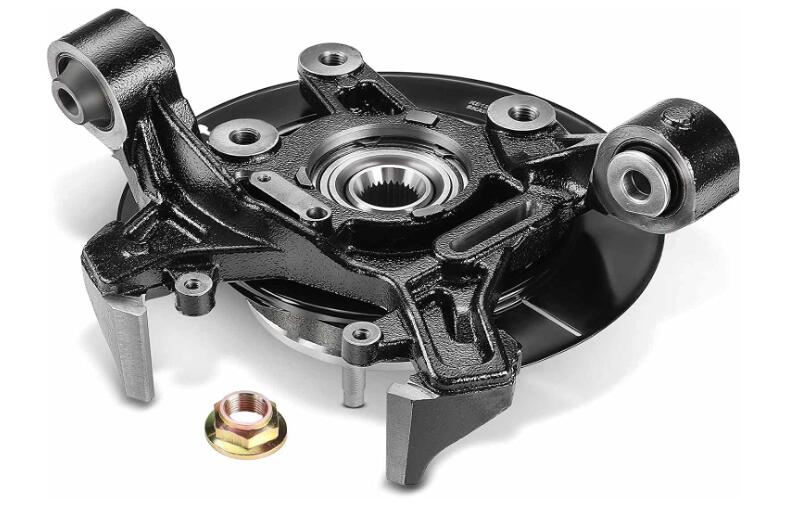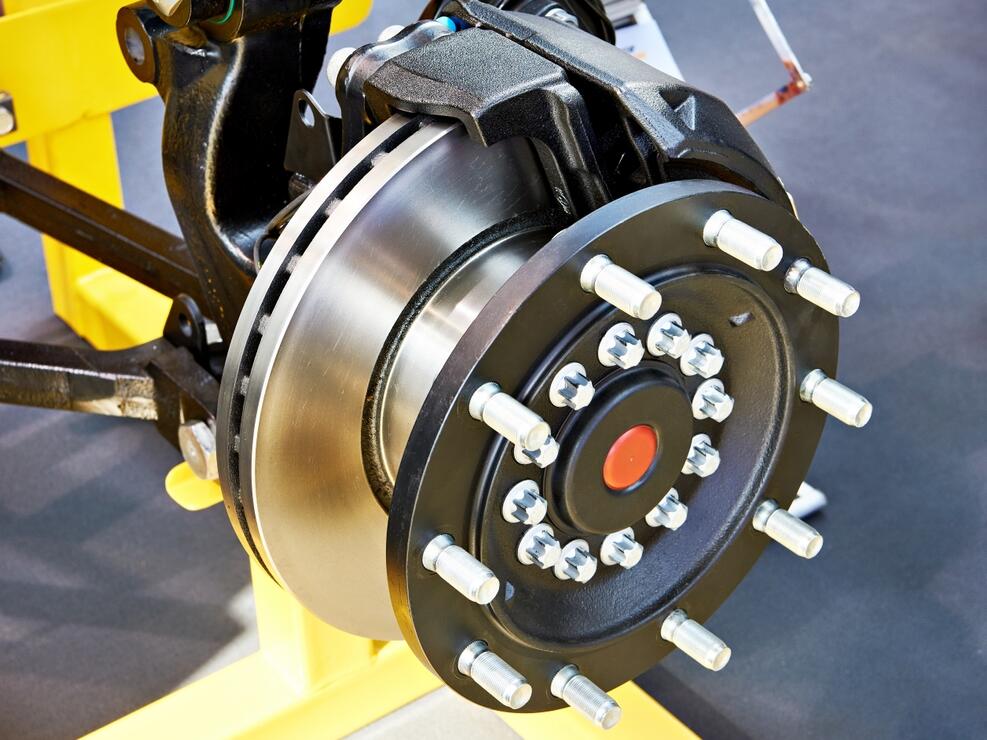Introduction
The automotive industry is characterized by its stringent standards, ensuring safety and performance in various components.
One such critical standard, often a topic of interest among automotive component manufacturers, is the AEC-Q100.
While it primarily governs semiconductor devices used in automotive systems, understanding its implications and standards can provide insights into the broader context of automotive quality management, especially when adapted to components like wheel bearings.
1. Introduction to the AEC-Q100 Standard
The AEC-Q100 standard pertains to stress tests and references for electronic components’ qualification in automotive applications.
Developed by the Automotive Electronics Council (AEC), this standard sets forth the necessary benchmark for ensuring the reliability and durability of electronic components in automobiles.
Even though the AEC-Q100 primarily focuses on semiconductor devices, its overarching approach to quality and performance testing offers valuable perspectives that can be applied to other automotive components, including wheel bearings.
2. Why Wheel Bearings Require Stringent Standards
Wheel bearings are pivotal in a vehicle’s operation, enabling the wheel hub to rotate freely on the axle.
These components must be durable and reliable, bearing the vehicle’s weight, withstanding varying speeds, and enduring various road conditions.
Given their significance, it becomes paramount that wheel bearings meet stringent quality standards.
A failure in this component can lead to critical safety issues, impacting the vehicle’s stability, control, and overall performance.
Hence, adopting standards that ensure rigorous testing and quality assurance, like the AEC-Q100 for electronic components, is crucial for wheel bearings.
3. Drawing Parallels: How AEC-Q100 Principles Apply to Wheel Bearings
While the AEC-Q100 specifically targets semiconductor devices, its underlying principles of thorough testing, quality assurance, and consistent performance can be mirrored in the context of wheel bearings.
- Environmental Durability: Just as semiconductor devices are tested for their endurance against temperature fluctuations, wheel bearings should also be assessed for their performance under different environmental conditions, such as extreme temperatures, moisture, and exposure to dust.
- Operational Longevity: The AEC-Q100 standard demands that semiconductor devices perform consistently over time. Similarly, wheel bearings should maintain operational integrity throughout their expected lifespan, regardless of the wear and tear.
- Resistance to External Stresses: External stresses, such as electrical interference for semiconductors, can be equated to physical stresses for wheel bearings, like load-bearing, impacts from rough terrains, or sudden braking events.
4. Advancing Wheel Bearing Standards with AEC-Q100 Insights
By integrating insights from the AEC-Q100 standard, wheel bearing manufacturers can enhance their components’ quality and reliability. Some proposed adaptations include:
- Adopting Comprehensive Stress Tests: Implementing stress tests that emulate real-world conditions, ensuring the bearings can withstand the multifaceted challenges they face on the road.
- Establishing Clear Benchmarks: Much like the AEC-Q100 specifies clear pass/fail criteria, wheel bearing standards should have clear benchmarks, providing manufacturers with explicit targets to achieve.
- Regularly Updating Testing Protocols: With the constant evolution of automotive technologies and the challenges of newer vehicle models, testing protocols should be periodically revised to stay relevant.
5. The Broader Impact of Integrating AEC-Q100 Principles
Embracing the principles embedded in the AEC-Q100 standard can bring about a transformative change in wheel bearing manufacturing:
- Enhanced Safety: By ensuring that wheel bearings can withstand extreme conditions, the overall safety of vehicles will significantly improve, reducing potential road mishaps.
- Longer Component Lifespan: Rigorous testing ensures that only the highest quality bearings make their way into vehicles, resulting in longer component lifespan and reduced maintenance needs.
- Boosted Consumer Trust: Knowing that wheel bearings are manufactured and tested based on stringent standards will enhance consumer trust in automotive brands, reinforcing brand loyalty.
6. The Future: Integrating Advanced Technologies with AEC-Q100 Principles
As the automotive landscape rapidly transforms with the integration of advanced technologies like autonomous driving, adaptive cruise control, and electric powertrains, it becomes increasingly crucial for every component, including wheel bearings, to keep pace with these evolutions.
- Sensor Integration: With vehicles becoming more interconnected, the potential for embedding sensors within wheel bearings could provide real-time data on bearing performance, wear and tear, and required maintenance schedules. Such advancements, built on the foundation of AEC-Q100’s stringent testing protocols, can ensure that these sensors’ reliability matches the high standards of the bearings themselves.
- Data Analytics and Predictive Maintenance: Harnessing the principles of thorough testing and consistent performance, integrating data analytics can help predict when a wheel bearing might fail or require maintenance. Inspired by the AEC-Q100’s focus on operational longevity, this proactive approach could significantly reduce vehicle downtimes and enhance safety.
- Materials Innovation: As semiconductor devices often incorporate novel materials to improve efficiency and durability, wheel bearings could similarly benefit from the research and integration of new, more resilient materials. Such developments, benchmarked against rigorous standards like the AEC-Q100, promise bearings that can withstand even greater stresses and have elongated lifespans.
7. Challenges and Considerations for Implementation
Adapting the principles of the AEC-Q100 standard to wheel bearings is not without its challenges:
- Cost Implications: Introducing more stringent testing protocols and incorporating advanced materials or technologies can drive up manufacturing costs. However, the long-term benefits of reduced warranty claims, improved customer satisfaction, and enhanced brand reputation can outweigh these initial investments.
- Training and Skill Development: A shift towards more complex testing methodologies might necessitate comprehensive training for the personnel involved. Investing in skill development ensures that the testing standards are consistently and accurately applied.
- Regulatory Compliance: While the AEC-Q100 serves as a guiding light, wheel bearing manufacturers must ensure that their adaptations align with existing automotive regulations and standards in various global markets.
8. Collaborative Efforts: The Way Forward
The journey of elevating wheel bearing standards, inspired by the AEC-Q100, differs from one that manufacturers should embark upon in isolation. Collaboration will be the key to success:
- Engaging with Regulatory Bodies: Regular interactions with automotive regulatory agencies can facilitate the smooth integration of new standards and testing protocols.
- Partnerships with Research Institutions: Collaborating with academic and research entities can expedite the discovery of innovative materials or technologies that can further elevate wheel bearing performance.
- Feedback Mechanisms: Establishing robust feedback channels with vehicle manufacturers and end-users can provide invaluable insights into real-world performance, guiding further refinements in the standards.
Conclusion: The Road Ahead
The AEC-Q100 emphasizing ensuring the utmost reliability of semiconductor devices in automotive applications, serves as a shining example for other components in the industry.
By extrapolating its core tenets to wheel bearings, there lies an opportunity to revolutionize the standards of quality, durability, and performance in this crucial component.
As vehicles continue to advance, incorporating many technologies and innovations, it becomes imperative that every single component, no matter how small or seemingly insignificant, meets the highest standards of excellence.
The future of automotive safety, efficiency, and performance hinges on this commitment to quality—a commitment that standards like the AEC-Q100 can guide and inspire.




